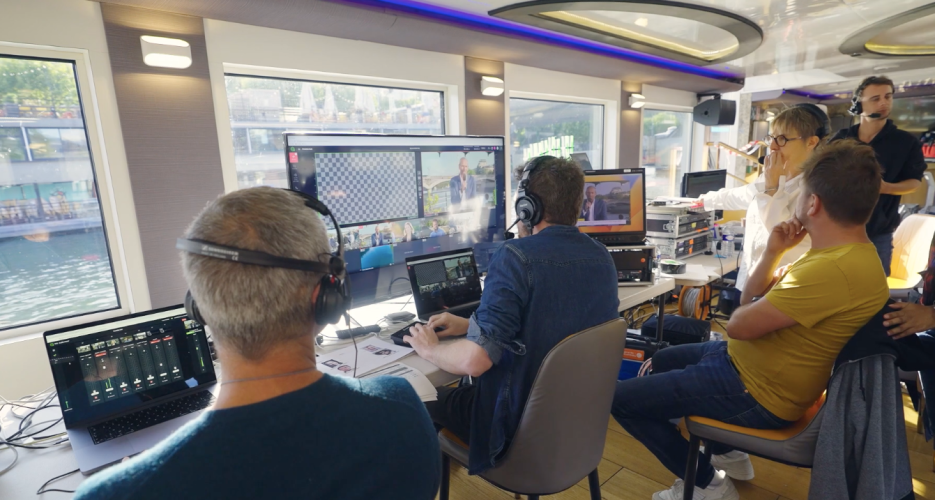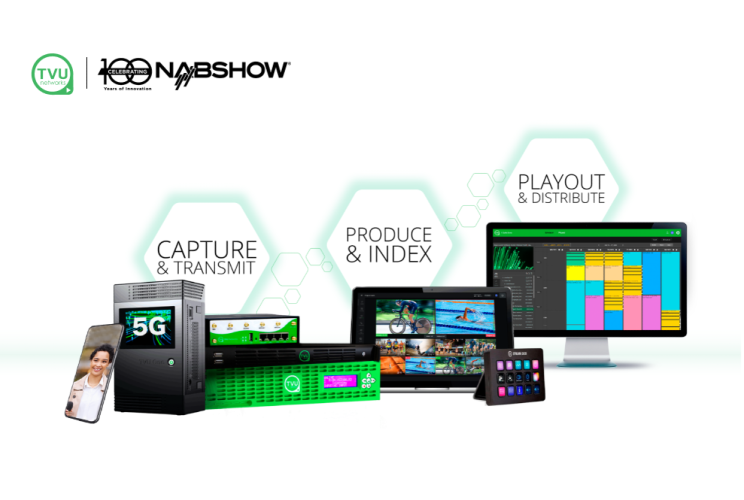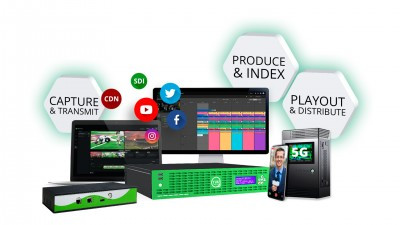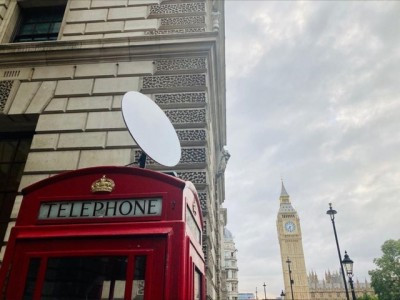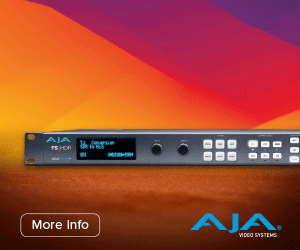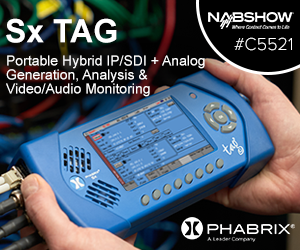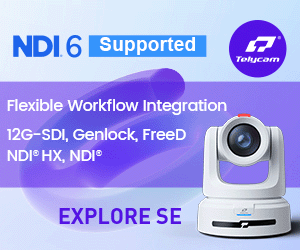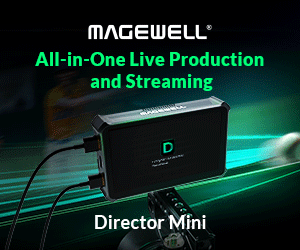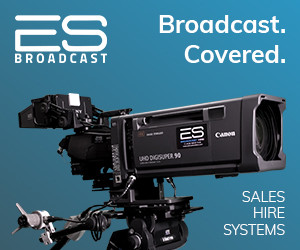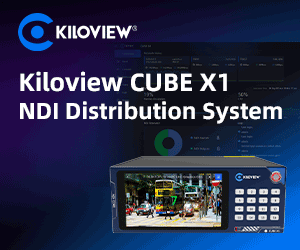by Eric Chang Issue 108 - December 2015
Law enforcement, homeland security, surveillance, emergency response and military operations may span a range of operations, but they all share a crucial need for a detailed, real-time picture of rapidly changing events from various field locations.
Leading law enforcement agencies have learned that there\'s no better way to evaluate the nuances of a critical situation than through live video with picture quality normally seen in TV news broadcast. And with advances in video capture, transmission, management and sharing, it\'s a powerful enhancement that agencies can now rely upon as routinely as they once did voice communications alone.
Emergency responders can capture video using a mobile pack in places vehicles wouldnt be able to reach because of blocked roads Imagine taking the pulse of civil unrest from many points in the thick of the action and from rooftops above the crowd, using proactive monitoring and policing to help calm situations before they escalate. Or streaming live video to central command from fire-fighting ground crews, trucks and helicopters, providing key information to coordinate and mobilize resources from multiple fire departments. Hostage negotiations, large public events, transportation safety or homeland security. No matter how complex the scenario, analysts can use real-time broadcast-quality video to get the real story as events unfold.
Using video to make critical, often life-and-death decisions, however, requires technology that goes far beyond the limitations of body cams or static surveillance cameras. Truly effective mobile live video surveillance must work seamlessly within the organization\'s existing digital infrastructure while delivering five key capabilities:
1. Respond Quickly
Cost-effectively deploy and re-deploy equipment as the situation dictates, with compact, lightweight, portable systems, rugged modular components and long battery life.
2. Capture Video Immediately
Start recording and transmitting professional-quality HD video with the simple push of a button. Or multiply resources by transmitting video from any smart device with a simple mobile app.
3. Transmit Signals Reliably
Securely send encrypted video, even in areas with weak wireless networks. Transmit from cars, armored vehicles, motorcycles, trains or helicopters without interruption.
4. Manage Information in Real Time
Stream live video to command centers for evaluation, and to in-field mobile devices for immediate response.
5. Share and Archive Video Easily
Distribute live video inside the organization, to other agencies or to news media. Automatically record all video for archiving, analysis or legal evidence.
In order to meet these stringent criteria, law enforcement units around the world are turning to California-based TVU Networks, a leader in IP-based live video solutions. Long a standard among large broadcast station groups, TVU\'s cost-effective, simple-to-use digital technology offers the best-in-class solution for delivering live video over wireless networks. Whether performing surveillance or emergency response, TVU\'s solutions leverage into existing workflows to help organizations transform traditional hard-wired operations to a predominately wireless IP-based infrastructure. They\'re designed to be flexible and scalable, so the platform can grow and change with the organization\'s needs.
In one major American city, the police force was able to see immediate benefits from their TVU system when faced with keeping the peace during a series of large demonstrations in the city center. A tactical commander observes, "We used four simultaneous video feeds, three from officers set up on rooftops or moving on foot through the crowd, and one from a helicopter monitoring crowd movements from the air. Then we displayed the video on a twenty-foot screen in our Emergency Operations Center. This live view of the action was critical in effectively managing our response to keep a potentially volatile situation from getting out of hand. When making decisions, there\'s nothing like actually seeing what\'s going on.\"
The commander adds, "The fact that the TVUPack is easy to operate is a big plus. All our officers have to do is plug in the camera, push the button, and we have live video. The officers carry the transmitter on foot because it\'s so lightweight, but we can also quickly transition to any vehicle and move to other locations without losing the video stream."
Remote terrain, poor weather, nearby buildings or electromagnetic interference can make it difficult to achieve sufficient bandwidth for live video transmission. In response to this challenge, TVU was the first to offer a hybrid transmission solution, seamlessly aggregating bandwidth by transmitting simultaneously over all available cellular, satellite, microwave, MIMO Mesh, WiFi, Ethernet and BGAN connections. Its proprietary advanced forward error correction algorithm, Inverse StatMux Plus (IS+), along with the TVU264 enhanced H.264 encoding engine, allows users to maximize the bandwidth available on each network connection and transmit the best possible picture. It automatically adapts to the transmission network environment, delivering dependable and stable HD quality even in locations with weak or compromised connections. It enables TVU systems to deliver superior HD picture quality wirelessly from even the most remote, bandwidth-challenged locations (including moving vehicles) to hardware video decoding receivers at operational headquarters, with under one second end-to-end delay through multiple transmission mediums. It supports multiple cellular 3G/4G LTE, microwave, satellite, WiFi, BGAN and Ethernet connections.
The companys mobile transmitter series are a family of small, lightweight, powerful transmitters, available in backpack style or ultra-compact models weighing less than three pounds. Their simple operation needs no in-field configuration. Just plug the unit into the camera source, press the green button, and begin transmitting real-time video on the fly. The transmitters are operational in less than 20 seconds from a cold start, and some feature dual hot-swappable batteries that offer up to seven hours of continuous recording. For added versatility, the TVU Anywhere mobile app allows any smart device to capture and transmit live video, giving tactical commanders even greater access to events as they happen.
TVUs transmitters feature powerful dual encoders that enable not just live transmission, but onboard recording for later on-demand retrieval as well. If wireless network connectivity is lost, the internal hard drive continues to record full HD video, allowing the stored content to begin forwarding once the connection is restored. This encoding technology also allows the uninterrupted feed of video shot on the move by foot or vehicle.
On the receiving end of the signal, TVU Grid offers streamlined switching, routing and distribution of all live video transmitted from the field. Accessible through a web browser, TVU Grid provides the ability to seamlessly switch incoming content with the click of a button, and share live video streams with the command center as well as remote tactical units and mobile devices.
Elite law enforcement and tactical operations worldwide have successfully deployed TVUPack and TVU Grid, to capture and distribute content in real time, assess situations quickly, make proactive decisions and implement an effective response. For both large-scale incidents and day-to-day operations TVU is an ideal choice that can help all types of agencies revolutionize the way they operate.





